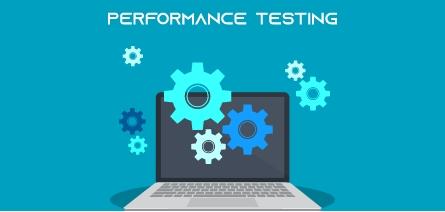In today’s fast-paced digital landscape, the performance of software applications is crucial not only for user satisfaction but also for maintaining a competitive edge in the market. As businesses increasingly rely on technology to drive operations and deliver value, the demand for optimal software speed has never been more pressing. A sluggish application can lead to frustrated users, increased bounce rates, and ultimately, lost revenue. Therefore, enhancing software performance has become a strategic imperative for organizations looking to cultivate efficiency and improve user experience. This article will explore effective strategies to boost software performance, providing insights into best practices, innovative techniques, and tools that can help organizations achieve optimal speed and reliability. By implementing these strategies, businesses can ensure their software applications not only meet but exceed user expectations, fostering loyalty and driving growth in an ever-evolving marketplace.
Table of Contents
- Understanding the Impact of Code Optimization Techniques
- Leveraging Efficient Data Structures for Improved Performance
- Implementing Caching Mechanisms for Increased Speed
- Utilizing Performance Monitoring Tools for Continuous Improvement
- In Summary
Understanding the Impact of Code Optimization Techniques
Code optimization techniques are fundamental for enhancing software performance. These methodologies not only reduce execution time but also improve resource utilization. By implementing strategies such as loop unrolling, inlining functions, and dead code elimination, developers can achieve significant boosts in performance. Moreover, the choice of algorithms plays a crucial role; selecting more efficient algorithms for data processing can lead to a reduction in complexity and faster execution. The impact of these optimizations can be observed in various metrics, including decrease in memory consumption and increased throughput of operations.
To illustrate the differences before and after applying code optimization techniques, consider the following table which highlights common performance metrics:
| Metric | Before Optimization | After Optimization |
|---|---|---|
| Execution Time | 200ms | 80ms |
| Memory Usage | 150MB | 70MB |
| Throughput | 100 requests/s | 300 requests/s |
Transitioning through these optimization steps can have profound effects not only on performance but also on user experience, making software feel more responsive and engaging. By continuously evaluating and refining code, developers can maintain an edge in an increasingly competitive landscape.
Leveraging Efficient Data Structures for Improved Performance
Employing efficient data structures is pivotal in enhancing software performance, especially when dealing with large datasets or high-frequency operations. By utilizing optimized data structures, developers can significantly reduce the complexity of various algorithms, which directly impacts execution time and memory usage. Consider the following advantages of implementing appropriate data structures:
- Reduced Time Complexity: Choosing the right structure, such as hash tables for quick lookups or priority queues for efficient task scheduling, can expedite processing.
- Enhanced Memory Utilization: Structures like linked lists or trees can minimize wasted space, adapting dynamically to the amount of data.
- Improved Data Management: Organizing data logically allows for easier updates, retrievals, and overall efficient management.
To illustrate the impact of selecting optimal data structures, let’s consider a comparison between common choices in terms of performance in specific use cases:
| Data Structure | Use Case | Time Complexity (Average) |
|---|---|---|
| Array | Static Collections | O(1) for access |
| Linked List | Dynamic Collections | O(n) for access |
| Hash Table | Fast Lookups | O(1) for average case |
| Binary Search Tree | Ordered Data | O(log n) for average case |
By strategically selecting data structures that align with the specific needs of an application, developers can unlock significant gains in performance, ensuring that software operates at its optimal speed under various conditions.
Implementing Caching Mechanisms for Increased Speed
When it comes to optimizing software performance, implementing caching mechanisms is a crucial strategy that can dramatically enhance speed and responsiveness. By storing frequently accessed data in a temporary storage location, or cache, applications can reduce the time spent retrieving data from slower storage systems. This not only amplifies performance but also improves the overall user experience. Common types of caching include:
- Memory Caching: Utilizing RAM to store data for quick retrieval, significantly speeding up access times.
- Database Caching: Keeping query results in a cache to prevent repetitive database access delays.
- Content Delivery Networks (CDN): Distributing cached content across multiple locations to reduce latency for end-users.
To effectively implement a caching strategy, it’s essential to choose the appropriate caching layer based on the specific needs of your application. Below is a simple comparison of popular caching types:
| Caching Type | Use Case | Benefits |
|---|---|---|
| Memory Caching | High-frequency data access | Fast access, reduced latency |
| Database Caching | Heavy read operations | Lower database load, faster queries |
| CDN | Static content delivery | Global reach, improved load times |
Utilizing Performance Monitoring Tools for Continuous Improvement
Performance monitoring tools play a vital role in identifying bottlenecks and inefficiencies in software systems. By implementing these tools, teams can gain valuable insights into application performance, allowing for data-driven decision-making. Consider the following benefits of utilizing performance monitoring solutions:
- Real-time Analytics: Track performance trends and identify issues as they occur.
- User Experience Improvement: Monitor load times and responsiveness for end-users.
- Resource Allocation: Optimize resource usage based on usage patterns and needs.
To maximize the impact of performance monitoring, it’s essential to establish a system of continuous feedback and improvement. Regularly review metrics and use them to inform development practices and release cycles. Below are key strategies to ensure an effective performance monitoring process:
- Set Clear KPIs: Define specific performance indicators that align with business goals.
- Active Monitoring: Use automated tools to continuously assess performance.
- Cross-team Collaboration: Foster communication between development, operations, and quality assurance teams.
| Strategy | Description |
|---|---|
| Feedback Loops | Use insights from monitoring to improve future iterations. |
| Benchmarking | Compare performance against industry standards. |
In Summary
optimizing software performance is not just an essential step in the development process—it is a fundamental component of delivering superior user experiences and achieving business objectives. By implementing the strategies discussed, such as code optimization, efficient architecture design, and proactive resource management, organizations can significantly enhance the speed and efficiency of their applications. Investing in performance improvement not only boosts productivity but also fosters customer satisfaction and loyalty in an increasingly competitive market. As technology continues to evolve, prioritizing performance will undoubtedly remain a critical factor in maintaining a leading edge. We encourage you to adopt these strategies and commit to a culture of continuous improvement, ensuring that your software not only meets but exceeds user expectations.






